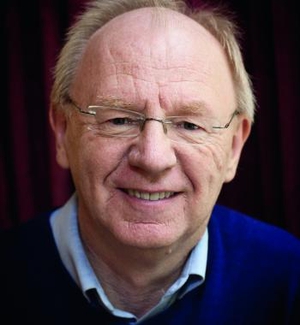
How Historian Rees Falsifies and Invents
2017-09-11 https://codoh.com
This article was inspired by Prof. Faurisson's article [1987] How Historian Gilbert Falsifies and Invents by Robert Faurisson.

Laurence Rees
Laurence Rees is a well-known British historian, author of several books about WWII and National Socialism. But it was one book in particular that earned him the British Book Award for History Book: Auschwitz: The Nazis and the Final Solution (BBC Books, 2005).
Was Rees worth it? I will let the reader decide after I provide three examples of this scholar’s work.
Höss’s Confessions (Rudolf Hoess)
Regarding Rudolf Höss, Rees quotes him as saying:
“At that time there were already in the General Government three other extermination camps: Belzec, Treblinka and Sobibor.” (pp. 88f.)
Of course, anyone familiar with Höss’s “confessions” knows very well that Hoess never mentioned Sobibor but Wolzek, a non-existent camp and a real headache for the historians. Not so for Rees. He simply substitutes Sobibor for Wolzek. Problem solved!
Hitler’s Speech

Some pages later Rees quotes the following remark of Hitler:
“No one can say to me we can’t send them [the Jews] into the swamp! Who then cares about our people? It is good if the fear that we are exterminating the Jews goes before us.” (p. 109)
Source given in the footnote (p. 379): Hitler’s Table Talk 1941-1944 (Phoenix Press 2000).
Notice that no page is given and for a good reason: The quote is a total invention. The actual quote is on p. 87, and it’s quite different:
“Let nobody tell me that all the same we can’t park them in the marshy parts of Russia! Who’s worrying about our troops? It’s not a bad idea, by the way, that public rumour attributes to us a plan to exterminate the Jews. Terror is a salutary thing.”
Gröning’s Statement
The third example concerns the former SS Oskar Gröning. Gröning was interviewed by the BBC (for the documentary Auschwitz: The Nazis and the Final Solution), and he had one simple message for the Holocaust deniers. According to Rees, this is what he said:
“I would like you to believe me. I saw the gas chambers. I saw the crematoria. I saw the open fires. I was on the ramp when the selections took place. I would like you to believe that these atrocities happened because I was there.” (p. 373)
But if someone actually checks Groening’s statement in the interview (available online) he will notice that something is not quite right with the transcript as he will hear this:
“I see it as my task, now at my age, to face up to these things that I experienced and to oppose the Holocaust deniers who claim that Auschwitz never happened. And that’s why I am here today. Because I want to tell those deniers: I have seen the crematoria. I have seen the burning pits. Αnd I want you to believe me that these atrocities happened. I was there.”
It’s clear that Rees has “improved” Gröning’s statement by inserting an admission of the gas chambers! No further comment necessary.
So now dear reader, you can judge for yourself. What would you give to this famous and respected historian? The British Book Award or The David Copperfield Trickster Award? Before you decide, here is a final quote of the great Greek historian Polybius:
“When one or two false statements have been discovered in a history, and they have been shown to be willful, it is clear that nothing which such an historian may say can be regarded as certain or trustworthy.” (Histories, 12.25)
Additional information about this document
|
Author(s) |
|
|
Title |
How Historian Rees Falsifies and Invents |
|
Sources |
n/a |
|
Contributions |
n/a |
|
Dates |
published: 2017-09-11, first posted on CODOH: Sept. 11, 2017, 3:03 p.m., last revision: n/a |
|
Comments |
n/a |
|
Appears In |
|
|
Mirrors |
n/a |
|
Download |
n/a |